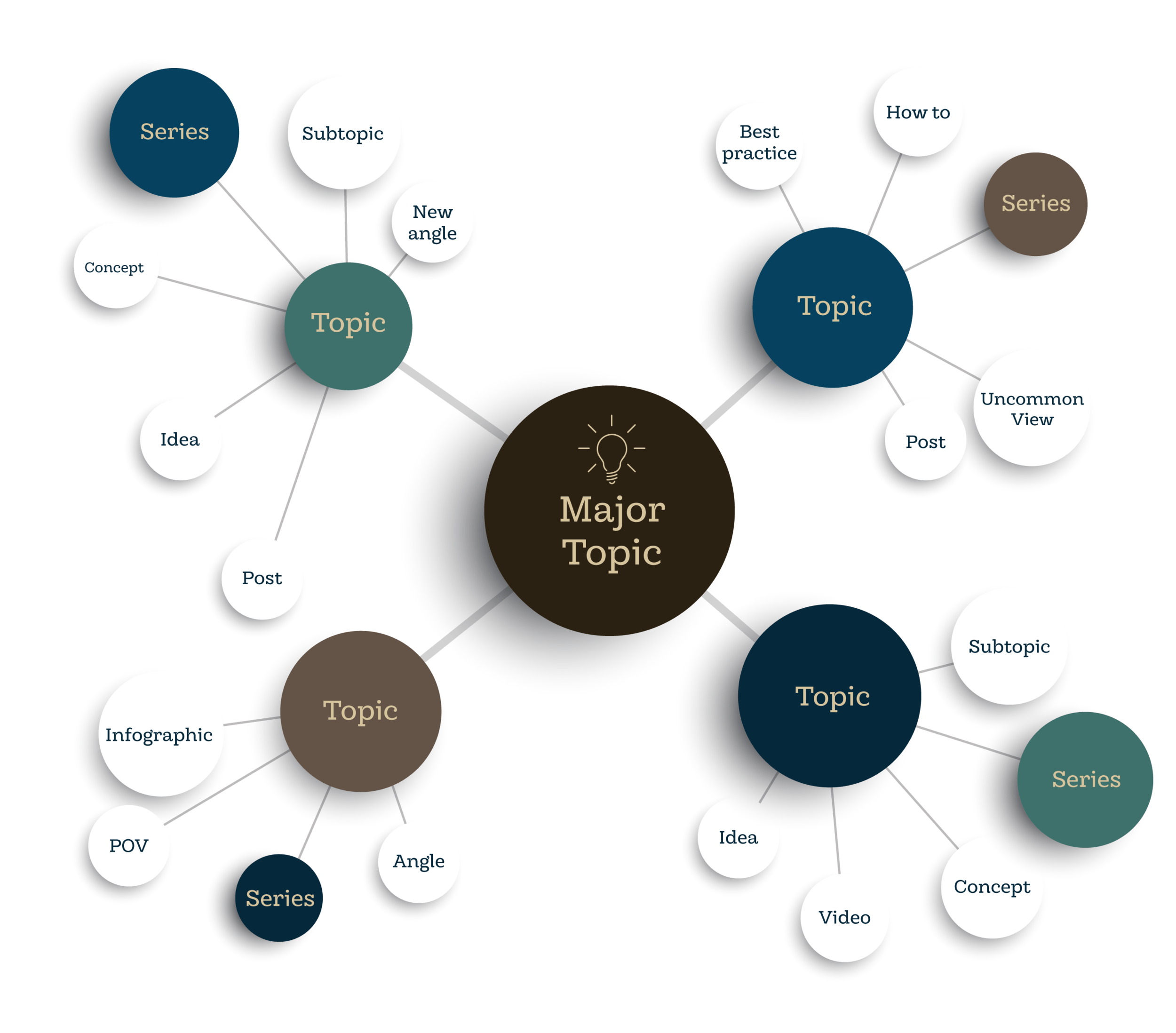Keep a steady stream of ideas with a content idea map
Last week, I went step-by-step through one of many ways you can follow to build a blog post. But a blog should include many posts that are relevant to your business and its purpose. So this week, I’ll walk you through how to build a content map (or several) as one method to keep the ideas coming.
If you’re familiar with mind mapping, you may already have a good idea of where I’m going with this. Just to be clear, this isn’t about mapping content to personas or buyer stage. It’s about using a mind map to brainstorm and build a repository of connected content ideas you can pull from as you plan.
Here’s a conceptual image of what a content map can look like:
I find it can be challenging to generate enough ideas to build a content map on my own steam in a reasonable amount of time, so I like to bring friends (colleagues) into the brainstorm with me. Getting a group of people together in a room to bounce ideas around makes for a lively conversation since all the possibilities trigger creativity in different ways for different people. This is one of my favorite parts of planning - brainstorming all the things with smart, creative people!
Start with one major topic or key message as the central focus
When I build marketing strategies with my clients, one of the exercises I do with them is to take each key message and brainstorm all the different content ideas we can think of to help get that message across.
Everything is fair game. I don’t restrict the discussion to topics - we bring medium into the discussion as well since some content ideas are better suited to specific channels.
We also discuss different ways to position the content, such as covering a topic through a negative perspective. Or asserting a point of view about a topic.
It may seem a bit granular for a brainstorm session, but it’s all about keeping the conversation flowing naturally. Don’t get caught up in the details, but don’t restrict them from being part of the ideas that come forward unless the discussion starts to go off the rails.
Drop down a level and add topic branches to each major topic
This is where the content ideas can start to really flow. You’re taking that big topic and breaking it down into smaller topics based on a few essential factors:
Your message - keep it in mind so you stay focused and don’t veer off into irrelevant territory.
Your audience - keep them in mind to ensure the ideas are addressing their needs.
Your goals - keep them in mind to filter out content that may not help you achieve your goals.
These three factors are ideal to stay laser focused on content that will fit within your plan and provide valuable information to your audience.
Dig even deeper to break down your topic branches into subtopics
This is usually where you might start to see connections between different content ideas more clearly, along with more granular details like the channel or medium because the topics are small enough now that you might get a mix of content titles and more generalized ideas. This is fine.
Keep breaking down each topic and subtopic until you can’t break it down anymore or until it doesn’t make sense to. The end result should provide you with a pretty comprehensive repository of ideas. Like this (click to enlarge):
I spent about 20 minutes putting this mind map together and it’s nowhere near as comprehensive as I could have done. I added subtopics I’ve already written about or have drafted in my queue for upcoming content. And that’s okay. The value of having it in the map is also in seeing how everything is connected.
Go and map your way to regular content
One of the most challenging aspects to keeping a content program going is having a steady stream of ideas. The second problem is having enough time. I can’t give you more time, but I can give you a way to generate ideas.


